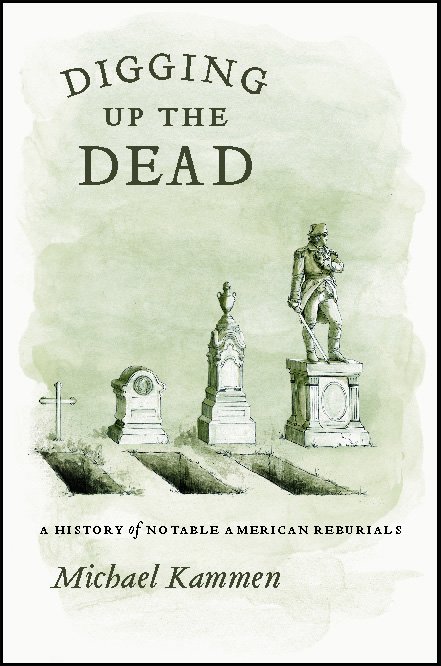A history of reburial in America

Though Pulitzer Prize-winning historian Michael Kammen’s new book Digging Up the Dead: A History of Notable American Reburials focuses it’s attention on the deceased, his unique approach breathes life into the telling of American history. A recent review in the The Chronicle of Higher Education attaches some lively adjectives to Kammen’s book like peculiar, morbid, and even funny, but as Kammen insists the book “‘[adds] up to more than a miscellaneous lot of bizarre and lurid, but morbid and intensely interesting, anecdotes…’ analyzing reburials helps us see important cultural trends, including the reputations of historical figures.”
Taking us to the contested grave sites of such figures as Sitting Bull, John Paul Jones, Frank Lloyd Wright, Daniel Boone, Jefferson Davis, and even Abraham Lincoln, Kammen explores how complicated interactions of regional pride, shifting reputations, and evolving burial practices led to public, often emotional battles over the final resting places of famous figures. Grave-robbing, skull-fondling, cases of mistaken identity, and the financial lures of cemetery tourism all come into play as Kammen delves deeply into this little-known—yet surprisingly persistent—aspect of American history.
Simultaneously insightful and interesting, masterly and macabre, Digging Up the Dead reminds us that the stories of American history don’t always end when the key players pass on. Rather, the battle—over reputations, interpretations, and, last but far from least, possession of the remains themselves—is often just beginning.
For more read this excerpt or check out the forementioned article on the online edition of the Chronicle of Higher Education.